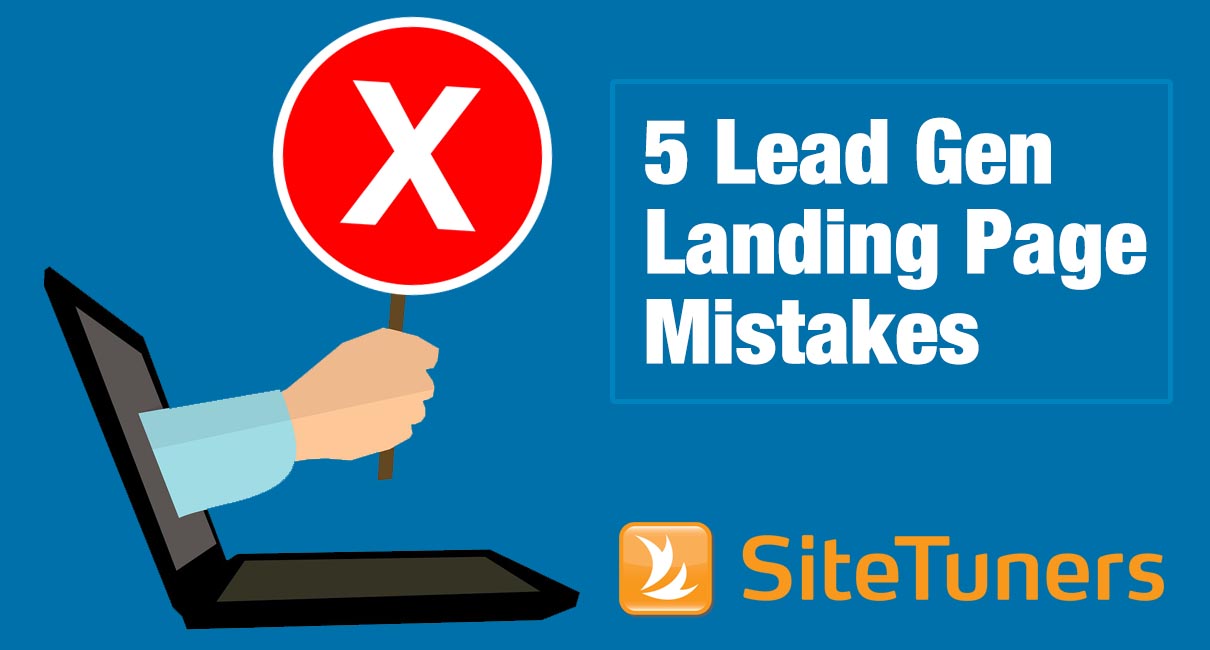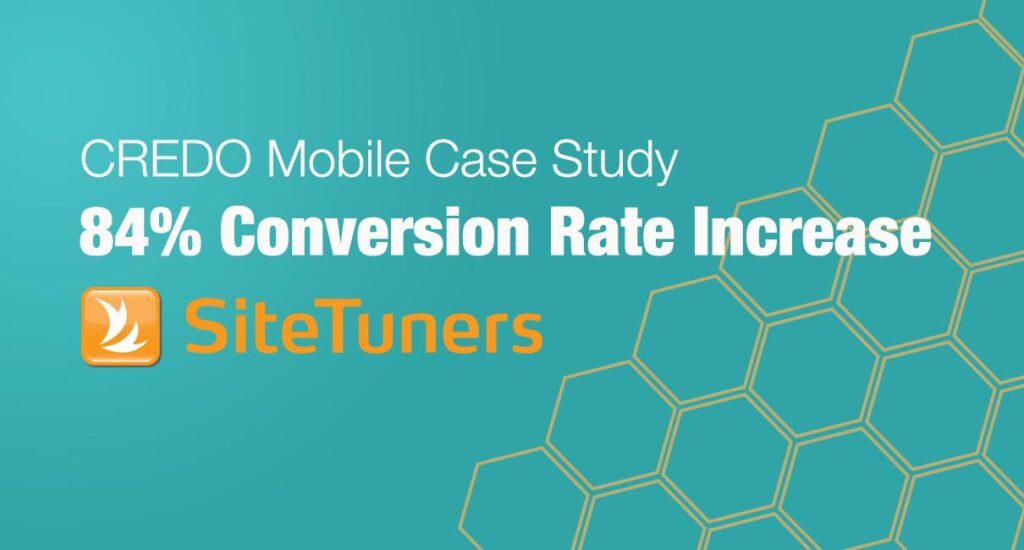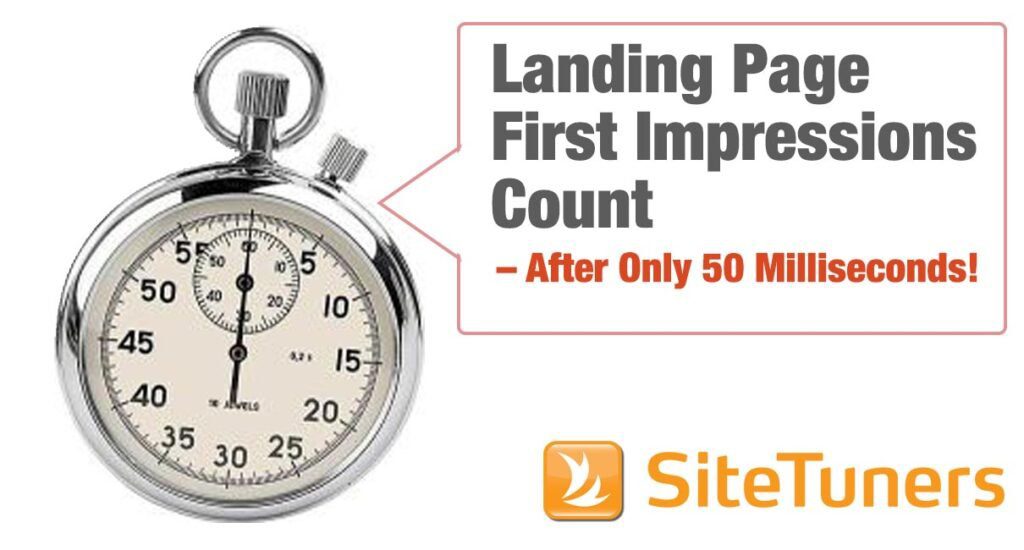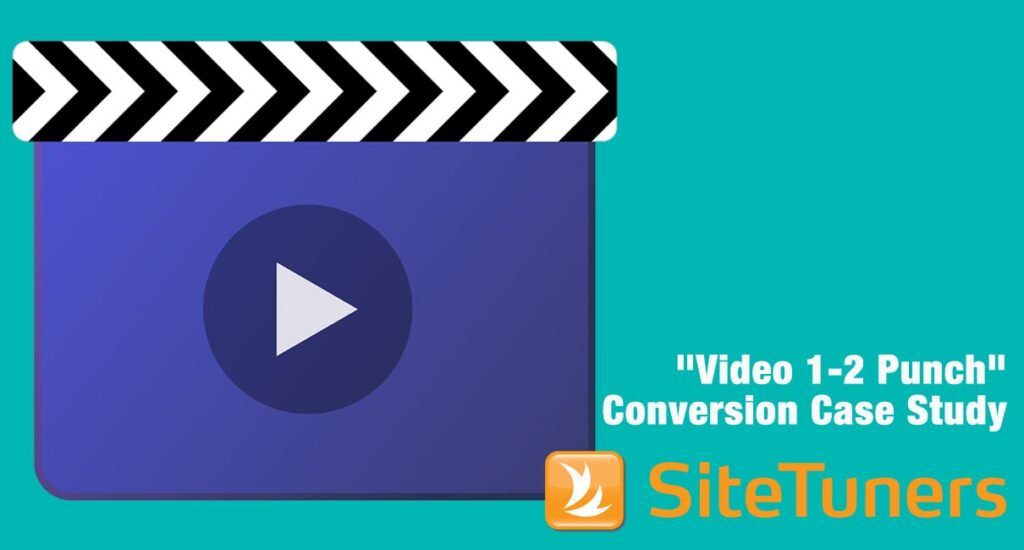Summary – In order to be successful in business-to-business (B2B) marketing, it is essential to have a lead generation website. A lead generation website is a website that is designed to capture leads from potential customers. The goal of a lead generation website is to convert visitors into leads, and then ultimately into customers. In this post, we discuss how to optimize a lead-generation website for maximum effectiveness.
In this post, we’ll discuss the best practices for optimizing your lead generation website so you can increase the number of leads you generate, while also improving the quality of those leads:
A lead generation website is an essential part of any B2B marketing strategy.
By generating more leads using a website, you also increase the number of potential customers to your business. In fact, statistics show that lead generation is the sole metric used by more than half of companies to gauge the success of their content.
But to generate highly qualified leads, it’s critical that your lead gen website is optimized for effective lead capture.
1. What is lead generation?
Lead generation is a process that helps businesses identify and capture potential customers, also known as leads. Leads are people who have shown an interest in purchasing a product or service from a company. The goal of lead generation is to convert these interested individuals into paying customers.
2. The importance of a lead generation website
A lead generation website is a website that helps you increase your prospects. It can help you connect with potential customers and build your relationships with existing customers.
In this sense, a lead generation website is a website created with the primary goal of attracting, nurturing, and converting leads for a business. Lead generation websites are valuable not only for marketing but also for ensuring that there’s a constant supply of fresh, high qualified leads in the company’s sales pipeline. While there are a number of ways to generate leads, your company’s lead gen website plays a central role as a customer touchpoint:
- It establishes your brand and provides prospects with information about your products and services
- It allows you to learn more about your online visitors and identify specific interests and needs that your target customer may have
- It helps you create and nurture a relationship with your potential customers through content, email marketing, or other methods
Done right, your lead generation website will help move leads and prospects through the funnel and increase the chances that they will eventually become paying customers.
3. Must-have elements of a lead generation website
There are key elements that must be in place in order for a lead-gen website to be effective. These elements are crucial for lead capture or getting data that tells you something about your prospects and their intent and action on your website.
Lead gen landing pages
A lead gen landing page could be any part of your website that’s primarily designed to:
- Capture the visitor’s attention and
- Persuade them to either stay and move to other areas of the site or take a desired action (ie. fill out a form, click through to a product or service page, etc.)
Landing pages usually act as a funnel, converting visitors into leads by convincing them to provide some form of information in exchange for something of value. For instance, you might have a landing page for a webinar where online visitors have to sign up and give you their email and other contact information in order to attend.
It goes without saying that your lead gen landing pages should be designed well and have persuasive copy in order to get people to take action. You can read our tips for designing an optimized lead gen landing page.
Lead gen forms
A lead form is the heart of your lead generation website and landing pages. It’s how you generate leads and collect valuable information about potential customers. However, you have to make sure that your lead gen forms are well-crafted and optimized to get high-quality leads. So when it comes to creating and designing your forms, it’s a good idea to follow best practices:
- Display your form prominently on the page where your prospects can easily find it. This is a no-brainer but many websites still make the mistake of burying or hiding important elements.
- Include only relevant fields in your forms. Nothing turns online visitors off faster than a form that’s asking for too much – and irrelevant – information. The key here is to ask only for information that’s absolutely necessary to complete the transaction. So if your visitor is at the top of the funnel and is only trying to download a free eBook, it doesn’t make sense to ask for their company address or phone number. You can always ask for additional information later, when you’ve nurtured them for some time.
- Humanize your error messaging. Error messages are often frustrating and confusing for users. They can be cryptic and unhelpful, leaving users feeling lost and helpless. This is especially true when an error occurs that the user doesn’t understand or when the user can’t find a solution online. One way to make error messaging more human is to use natural language instead of technical jargon. This makes it easier for users to understand what went wrong and how they can fix it.
- Label your form fields clearly so your online visitors can easily understand what information is required. Configure your form field to automatically configure the entry format if you’re asking for things like phone numbers so users don’t have to guess how you want data to be entered.
- Make sure the form is mobile-friendly. A majority of web traffic now comes from mobile devices, so your forms should be easy to use on all devices.
By collecting the right information through well-designed forms, you can streamline the lead qualification process and improve your overall lead conversion rate.
Calls to action
The call to action (CTA) may just be a button with copy, but it would be a mistake to underestimate its importance.
According to Jeremy Smith, the CTA “is an appeal to users, inviting their response.” This is what encourages visitors to provide their contact information in exchange for something of value.
Creating an effective call to action is essential for generating leads from your landing page. Here are a few tips for creating an effective CTA:
- Use clear, concise language that tells the visitor what you want them to do
- Make your CTA button stands out on the page and is easy to find
- Use urgency in your language, such as “now”
- Test different CTAs to see which is more effective at getting people to act
4. Designing high-converting lead-gen websites
Now that you know the must-have elements of a lead generation website, you should also understand how to put these elements together to ensure conversions.
Simply creating a website isn’t going to do much for your lead-generation efforts. Unbounce’s analysis of lead generation landing pages across 10 different industries reveals an average landing page conversion rate of 4.02%. But according to Hubspot, the average landing page conversion rate across all industries is 9.7%. This means that most lead-gen landing pages are actually converting lower than the average. That’s a lot of potential leads who don’t make their way through to the end of the funnel.
Taking the time to design a high-converting lead-gen website would greatly benefit your business. Whether you sell low or high-ticket products, a higher conversion rate means more leads to nurture into paying customers.
Here are the best practices for designing your lead generation website to improve conversion performance:
Professional look and feel
A professional look and feel is the bare minimum to get online visitors to trust you as a company and brand. Your lead gen website should be visually appealing and professional-looking, in order to create a positive impression with potential customers.
First impressions matter because it affects the user’s decision to engage with your website or hit the back button and look elsewhere for solutions. As David Mannheim observes, “people like better-looking products and sites and even associate perceived usability with aesthetics.”
Your website needs to be visually appealing. People are visual creatures: over half of our brain is devoted to processing visual information. That means we process visuals faster than we do any other type of information, such as text. So it’s important that your website looks easy on the eyes. Use images and videos deliberately to provide context and support the text so online visitors can easily understand your website.
Ease of use
Good website design isn’t just about aesthetics. It’s also about providing a good user experience so that your online visitors can easily do what they came to do on your website.
According to the Interaction Design Foundation, the key to designing for ease of use is asking yourself, “Can users interact easily enough with the interface to complete their tasks/goals effortlessly?” You can do this by taking a hard look at your website from a user’s perspective. Or, if in doubt, you can do some simple user testing to find out how your actual users would find their way around your website. User tests can also uncover hidden usability errors that prevent your online visitors from accomplishing their tasks and goals on your website.
To make sure that your website is as easy to use as possible, you have to minimize complexity. You can achieve this by doing the following:
- Reduce choices
- Use clear and concise language
- Organize information using easy-to-understand categories
- Provide clear labels for links and buttons
That means ensuring that your website is free from unnecessary elements that can distract or confuse users.
Relevance
If you have irrelevant content, then all of your efforts to build a great-looking, usable website is wasted.
Online users are on a mission. They’re unlikely to stay on your site if they do not find the content relevant to what they are looking for. In order to ensure that visitors will stay on your lead gen website and convert into leads, you have to provide engaging content that matches the intent of your target audience. The best way to do this is to tailor content based on the customer journey:
Top of the funnel stage (TOFU)– At this stage, your online users are aware of their problem and are looking for a solution. They might have come across your website for the first time so they probably don’t know you and your products/services yet. Focus on gaining trust and establishing a relationship by providing interesting and helpful articles, videos, and other content.
Middle of the funnel (MOFU) stage – Once your online visitors are already familiar with your brand, they move to the MOFU stage. Here, they may be interested in your product or service, but they’re not yet ready to buy. They’re likely still evaluating their options and considering whether your offering is the right fit for them. Your task at this point is to support your potential customer’s informational needs by providing resources that help them compare their options.
Bottom of the funnel (BOFU) stage – This is the final stage in your marketing and sales process, where leads are converted into customers. The bottom of the funnel is often referred to as the point of sale or POS. While customers are ready to buy at this stage, they still need a little nudge. To convert a lead into a customer, businesses must be able to address the objections that keep a customer from buying. They can also use persuasion techniques that make it easier for the prospect to convert, such as creating a sense of urgency or providing a compelling offer.
Mobile friendliness
With an ever-growing percentage of mobile internet use, a mobile-friendly website is now a requisite for success. According to Oberlo, mobile web traffic now accounts for 59.4 percent of global web traffic.
While desktop still wins when it comes to conversions, mobile visits are crucial in priming potential customers towards a conversion action. For instance, statistics reveal that up to 50 percent of B2B inquiries are made on mobile channels. This means that mobile plays a significant role during the top and middle funnel stages, with B2B visitors, likely doing their research and comparison shopping activities on their smartphones and then shifting to their laptop or desktop when they’re closer to the purchase.
A lead generation website should be designed with these key user behaviors in mind. That is, it should be optimized for accessing and consuming information on mobile devices. Below are some tips for optimizing your lead generation website for mobile:
Use a responsive design
Using a responsive design saves you time and money by eliminating the need to maintain separate mobile and desktop versions of your site. A responsive design ensures that your website will look great on all devices, from desktop computers to mobile phones. It also makes it easy for visitors to navigate your website and find the information they need. It also improves your search engine ranking by making your site mobile-friendly.
Use large, easy-to-click buttons
Large buttons are very important on mobile devices, where screen real estate is at a premium. By making your buttons large and easy to click, you’ll ensure that visitors can navigate your site with ease. They can also quickly and easily click through to your content and do what they came to do on your website. So if you’re looking to improve your lead generation website for mobile, start by making those buttons big and clickable! Your visitors will thank you for it.
Simplify your forms
Forms are an essential part of any lead generation website, but they can be a major barrier to mobile users. By simplifying your forms, you can make it easier for mobile users to convert, and improve your overall lead generation rate.
There are a few key things to keep in mind when simplifying your forms for mobile users. First, minimize the number of fields required. Every field you add will increase the friction for mobile users, so only include the absolutely essential information.
Second, use large, easy-to-tap buttons. As noted earlier, mobile users are often dealing with small screens and fat fingers, so large buttons that can be easily tapped are essential.
Finally, consider using auto-fill features whenever possible. This helps your online users fill out a form with minimal effort.
Use clear and concise copy
People don’t really read on the web. The best practice for writing web content is to write only as much information as needed for the online user to make an informed decision.
Of course, the amount of information can vary depending on the complexity of the product or service. For instance, you might need a longer copy if your lead gen offer needs to be highly convincing. Even then, it’s still a good idea to adhere to the rules of good web writing, which include:
- Writing clear and succinct headlines and short paragraphs
- Using bulleted or numbered lists to quickly enumerate points
- Breaking up large blocks of text with a header
- Using text formatting (bold, italics, etc) to emphasize important pieces of information
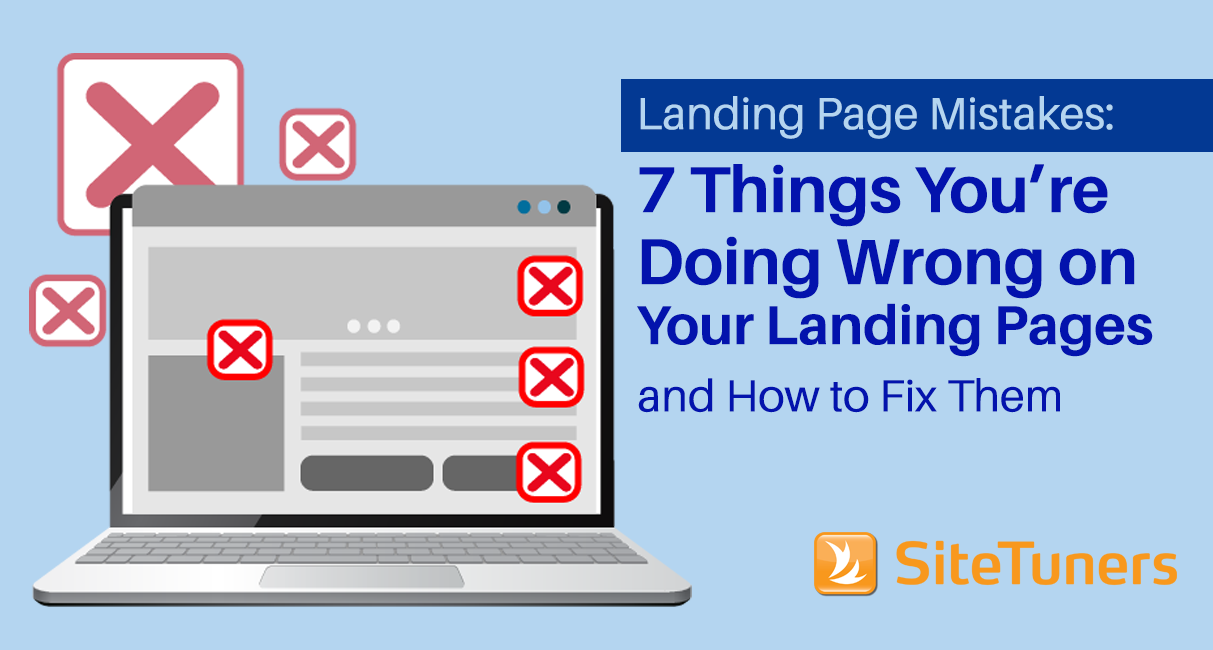
Avoid the most common landing page mistakes
5. Get more leads from your B2B website
When it comes to lead generation, there’s one thing you always want to keep in mind: the process should be as easy as possible for your customers. Optimizing your lead-gen website is an important part of this.
By knowing the critical elements and best practices for lead generation sites, you can reduce user effort and increase their ability to successfully complete whatever task they came to do. That means they can easily get information, fill out forms, and convey their interest in your product and services.
This is a win-win situation for both your business and potential customers.
